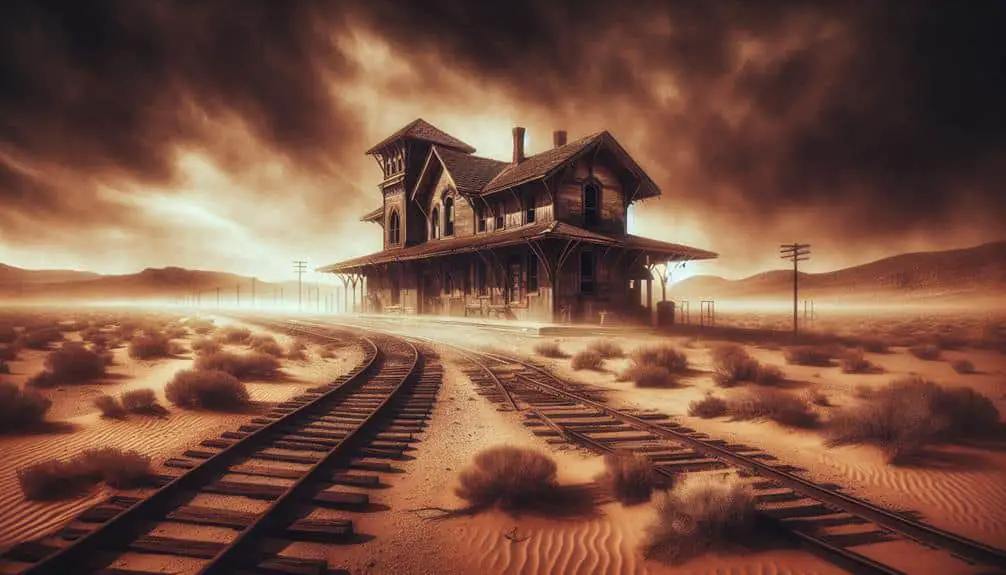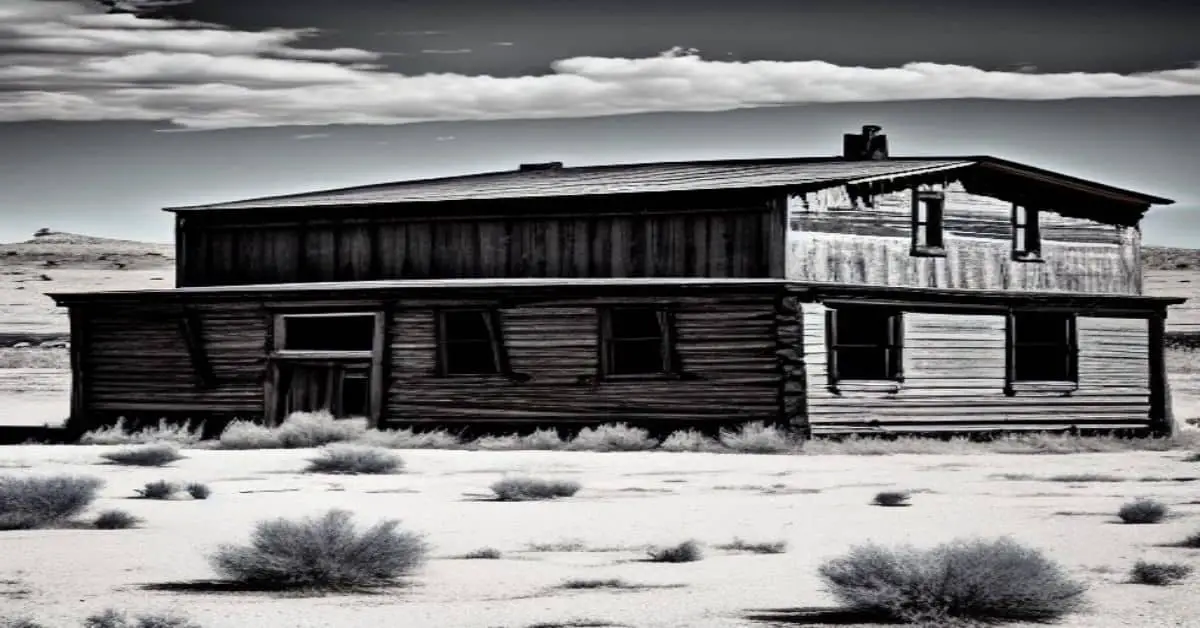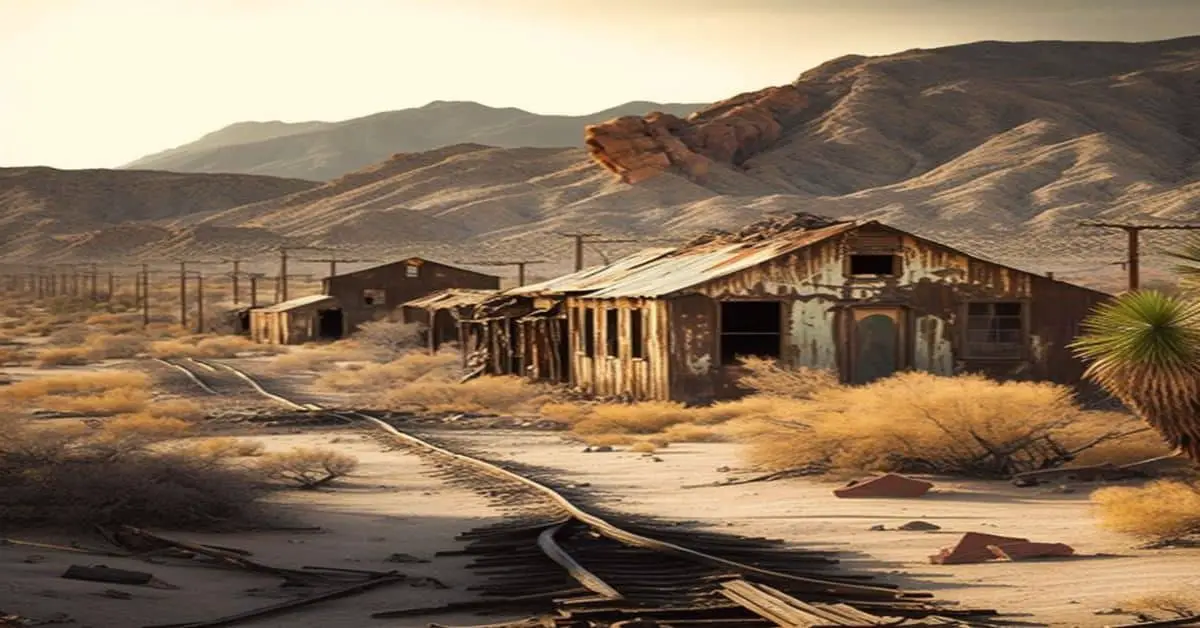Explore the forgotten railroad towns in Arizona for a glimpse into the state's intriguing past. Discover how these towns evolved due to the changing transportation landscape, creating bustling economic hubs. Witness the boom and bust cycles that shaped these communities, reflecting societal and economic shifts. The remnants of historic landmarks stand as a proof to the bygone era, offering a unique window into history. Uncover the economic impact of deserted railways on urban development and local prosperity. Preservation efforts are underway to protect these ghost towns, showcasing a blend of conservation and revitalization strategies. Find out more about Arizona's rich railroad history.
Key Points
- Arizona's railroad towns shaped by evolving transportation landscape and economic demand.
- Boom and bust cycles influenced by societal changes and industry shifts.
- Historic landmarks in abandoned towns offer glimpse into rich cultural past.
- Deserted railways have significant economic impact on local communities.
- Preservation efforts focus on historical conservation and community revitalization.
Origins of Arizonas Railroad Towns
Exploring the origins of Arizona's railroad towns reveals a rich tapestry of historical development intertwined with the expansion of the railway network. In the late 19th century, the establishment of early settlements in Arizona was greatly influenced by the evolving landscape of transportation. As the demand for efficient movement of goods and people increased, the need for reliable transportation networks became essential. This necessity led to the construction of railways, which ultimately played a vital role in shaping the growth and prosperity of many towns across Arizona.
The transportation evolution in Arizona not only connected previously isolated communities but also facilitated the establishment of new settlements along the railway lines. The railroad towns that emerged were often vibrant hubs of economic activity, attracting businesses, settlers, and opportunities for growth. These early settlements, born out of the transportation boom, laid the foundation for the diverse and dynamic communities that continue to thrive in Arizona today.
Boom and Bust of Railway Communities
The rise and fall of railway communities in Arizona's history reflect a complex interplay of economic forces and societal changes. In the late 19th and early 20th centuries, these communities experienced rapid growth due to the expansion of the railroad network, attracting settlers, businesses, and industries. Towns like Jerome, Bisbee, and Clifton flourished as mining and agriculture thrived, supported by the efficient transportation provided by the railways.
However, as economic conditions shifted and industries declined, many railway communities faced a period of decline. The once bustling towns saw populations dwindle, businesses close, and infrastructure deteriorate. The decline was often swift, leaving behind empty buildings and a sense of abandonment.
Despite the challenges, some railway communities displayed remarkable resilience. Through diversification of industries, tourism initiatives, or historic preservation efforts, a few towns managed to adapt and find new sources of economic stability. These examples of community strength serve as a reflection of the enduring spirit of Arizona's railway towns in the face of rise and decline.
Historic Landmarks in Abandoned Towns
Amidst the remnants of once-thriving railway communities in Arizona lie significant historic landmarks that offer a glimpse into a bygone era. The historic architecture found in these abandoned towns serves as a poignant reminder of the cultural significance they once held. Structures such as old train stations, hotels, and churches stand as evidence to the ingenuity and craftsmanship of the past.
Exploring these historic landmarks allows you to immerse yourself in the rich history of Arizona's railroad towns. The intricate details of the buildings, from the ornate facades to the sturdy construction, speak volumes about the values and aspirations of the people who inhabited these places long ago.
Each historic landmark holds a unique story waiting to be discovered. Whether it's the faded grandeur of a once bustling main street or the quiet elegance of a deserted mansion, these sites offer a glimpse into a world that has long since passed. By preserving and honoring these historic landmarks, we keep alive the memory of the people and events that shaped Arizona's railway communities.
Economic Impact of Deserted Railways
The deserted railways in Arizona carry a significant economic impact, shaping the financial landscape of the region as remnants of once vibrant transportation corridors. The decline of the railway industry hasn't only affected the historical aspect of these areas but has also influenced urban development patterns. As railways were integral to the growth of towns and cities, their abandonment has left a void in economic opportunities. Businesses that once thrived alongside these railways have suffered, leading to job losses and a decrease in local commerce. The ripple effect of deserted railways is felt in various sectors, impacting tourism, real estate, and overall community prosperity.
The railway industry's decline has altered the trajectory of urban development, with many towns that relied heavily on rail transport now struggling to find new sources of income. The absence of active railways has hindered potential growth opportunities and investment in these areas. As a result, the economic vibrancy that once characterized these regions has diminished, leaving behind a poignant reminder of the changing tides in transportation infrastructure and its profound impact on local economies.
Preservation Efforts for Ghost Towns
With a concerted focus on historical conservation and community revitalization, efforts to preserve ghost towns in Arizona have gained momentum in recent years. Preservation strategies for these abandoned settlements vary, ranging from physical restoration of buildings to the creation of historical tours and educational programs. Community involvement plays a pivotal role in these preservation efforts, with local residents often spearheading initiatives to protect and promote the cultural heritage of these ghost towns.
Preservation strategies often involve partnerships between local governments, historical societies, and private organizations. By working together, these groups can secure funding, access resources, and implement long-term plans to safeguard these historical sites. Community involvement not only guarantees that the history of these ghost towns is preserved but also fosters a sense of pride and belonging among residents.
As preservation efforts continue to evolve, the challenge lies in finding a balance between maintaining the authenticity of these ghost towns and making them accessible to the public. By engaging in thoughtful preservation strategies and fostering strong community involvement, Arizona's ghost towns can continue to serve as valuable historical landmarks for future generations.
Frequently Asked Questions
How Did the Construction of Railroads in Arizona Impact Indigenous Communities and Their Land Rights?
When railroads were built in Arizona, they greatly impacted indigenous communities and their land rights. The influx of settlers and development often led to the displacement and marginalization of native peoples and their ancestral territories.
What Role Did Women Play in the Development and Decline of Railroad Towns in Arizona?
In the development and decline of Arizona's railroad towns, women's influence was essential. Their roles in community growth were pivotal, shaping gender dynamics and adapting to economic shifts. Their contributions were fundamental to the towns' evolution.
Are There Any Documented Supernatural Occurrences or Ghost Stories Associated With the Abandoned Railway Communities?
Explore the eerie mysteries of abandoned railway towns in Arizona. Haunted legends, paranormal investigations reveal ghostly encounters and supernatural folklore. Discover the chilling tales that linger among the forgotten remnants of these communities.
How Did the Arrival of the Automobile and Highway System Contribute to the Downfall of Railroad Towns in Arizona?
The Impact of the automobile and highway system on railroad towns in Arizona was immense. Transportation technology transformed travel, leading to a decline in rail usage, affecting the economy and population of these once-thriving communities.
What Environmental Factors Have Contributed to the Deterioration of Historic Landmarks in Deserted Railway Towns?
As you explore the impact of pollution and urban sprawl on deserted railway towns, you'll uncover how these environmental factors have accelerated the deterioration of historic landmarks, leaving behind echoes of a forgotten past.



